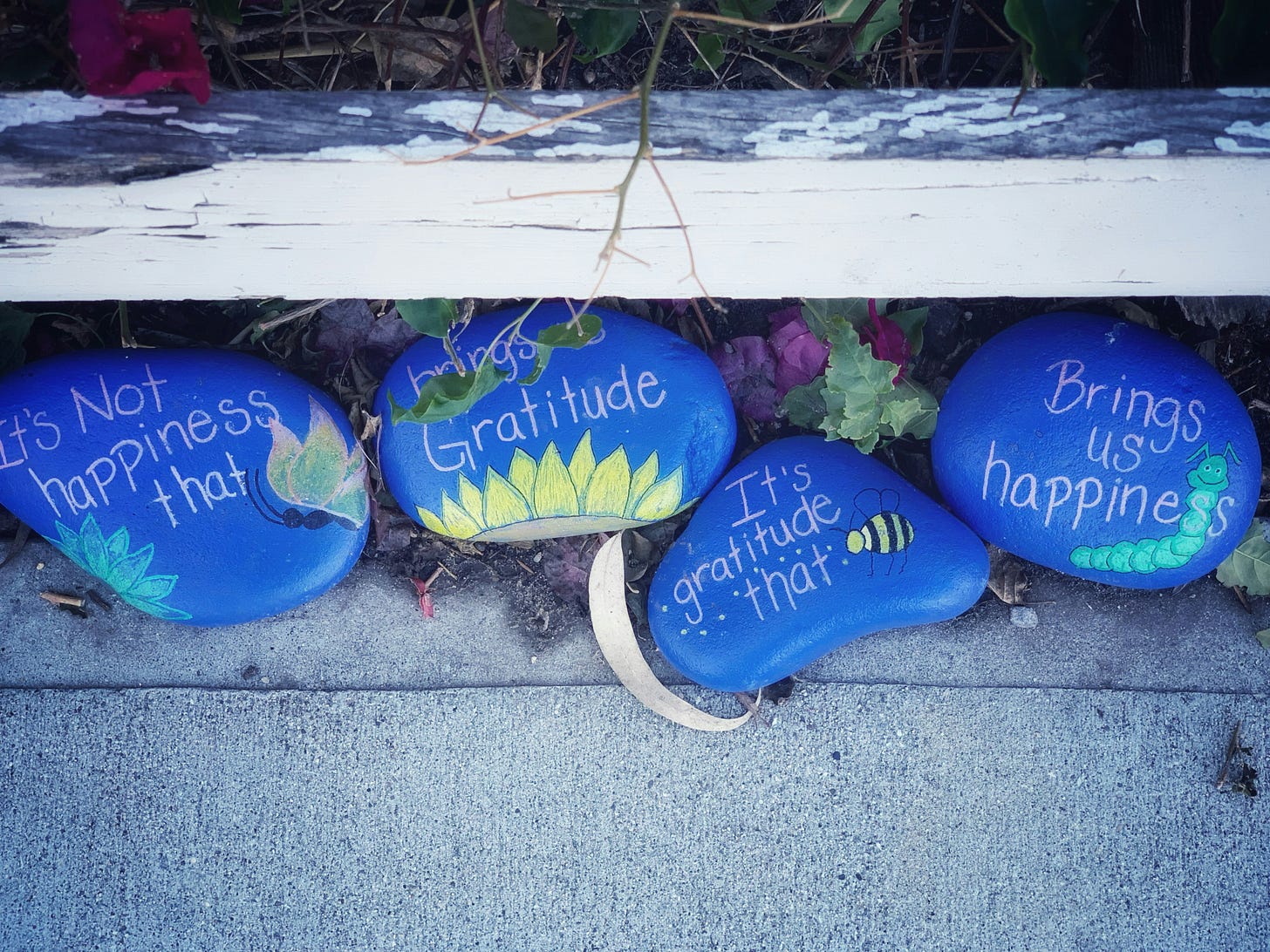The Radical Act of Being Grateful
What if gratitude was the answer to “what do we do now”?
By Kelly Burton
As Thanksgiving week begins, we are inevitably surrounded with reminders to “give thanks” and “be grateful.” Gratitude is the dominant theme of this holiday, so it can be easy to write off as cheesy and cliché. Thanksgiving = thankful. Check.
But what if “give thanks” was the answer to the gnawing question of “what do we do now?” that we’ve all been asking each other for the past three weeks? What if the most important thing we can do right now is the radical act of being grateful?
To consider:
Gratitude has a huge impact on our own well-being
Science consistently confirms that gratitude doesn’t just make a person feel good; it is a powerful tool for mental and physical well-being. For example, studies show that regular gratitude practice can lead to higher levels of positive emotions, improved sleep, less stress, fewer symptoms of illness, stronger relationships, and more optimism about life. When we express gratitude, our brain releases dopamine and serotonin, which generate a sense of well-being and happiness in our bodies. Y’all, gratitude literally rewires our brains to recognize the positive in our lives. This means practicing gratitude is not just about feeling thankful; it's an active force that shapes our outlook and our outcomes.
Gratitude keeps us connected to each other
In a world where we are struggling to stay connected to each other, a recent study suggests giving thanks can actually reduce feelings of loneliness. This is on top of other studies that found gratitude practices (e.g. keeping a gratitude journal, writing gratitude letters, or simply saying thank you) can lessen loneliness. It makes intuitive sense – if we’re gratitude-minded, we are more likely to notice the good things in our lives, including the people around us. Expressing our appreciation can then strengthen our connection with each other, fostering a deeper sense of community. Gratitude creates a ripple effect of connection across individuals and communities, which is exactly what we need right now.
Gratitude is a foundation for happiness, and action
As the “grandfather of gratitude” Brother David Steindl-Rast says in his famous TedTalk, “It is not happiness that makes us grateful, but gratefulness that makes us happy.” This means that happiness doesn’t come from the situation itself; it comes from how we experience the situation, which is up to us. And while we certainly can’t expect to be grateful for everything or everyone, Br David reminds us that we can choose to find the opportunity in each moment. How? His “Stop. Look. Go.” formula reminds us to stop rushing, look for the opportunities in each situation, and go take action. This is the foundation for fundamental change. As he says:
“There is a wave of gratefulness because people are becoming aware how important this is and how this can change our world. It can change our world in immensely important ways, because if you’re grateful, you’re not fearful, and if you’re not fearful, you’re not violent. If you’re grateful, you act out of a sense of enough and not of a sense of scarcity, and you are willing to share. If you are grateful, you are enjoying the differences between people, and you are respectful to everybody, and that changes this power pyramid under which we live… What we need is a networking of smaller groups, smaller and smaller groups who know one another, who interact with one another, and that is a grateful world.”
So, when we don’t know what to do or where to start, maybe we start by giving thanks. Maybe that’s how we lay a solid foundation for where we go next, for ourselves and each other. Maybe that’s what this Thanksgiving, with its complicated history and complicated present, is all about. And maybe, just maybe, that’s how we go about changing the world.
Reflection questions:
What are you grateful for this Thanksgiving?
What are some ways you practice gratitude?
Try the gratitude formula of “stop, look, go.” What do you notice?
How are you reconnecting with yourself, your people and your purpose this week?
Gratitude practice when you’re simply not feeling grateful:
And how might you practice gratitude when you’re simply not feeling grateful? Stephanie Foo, author of the book What My Bones Know: A Memoir of Healing from Complex Trauma, has a practice you can try. The steps are below, and you can listen to her walk through the steps here.
Take a moment to think about a positive event in your life. It could be a career or educational achievement or a special trip you took.
Imagine yourself back in the time of this event. Think about the circumstances that made it possible.
Ponder on the ways in which this event may never have happened. For example, if you hadn’t learned about a certain job opening at the right moment.
Write down all of the possible events and decisions - large and small - that could have gone differently and prevented this positive event from occurring.
Imagine what your life would be like now if you had not experienced this positive event and all the fruits that came from it.
Remind yourself that this positive event did happen and reflect upon the benefits it has brought you. Allow yourself to feel grateful that things happened as they did.
Resources:
Brother David Steindl-Rast TedTalk
Expanding the Science of and Practice of Gratitude at the Greater Good Science Center
How to Practice Gratitude When You’re Not Feeling Grateful (podcast)
The Science Behind Gratitude (podcast)


